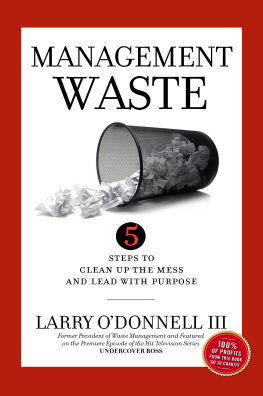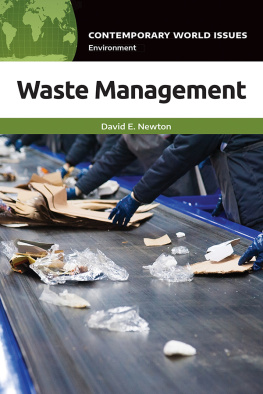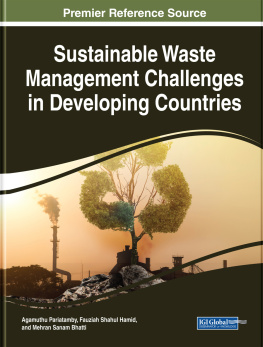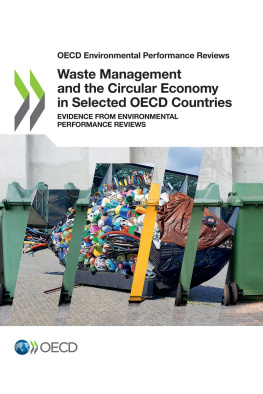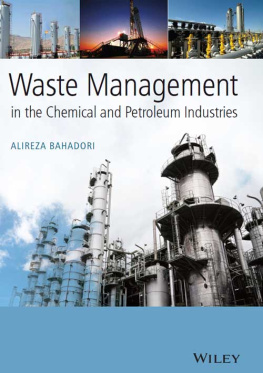Hazardous Waste Management
In Whose Backyard?
AAAS Selected Symposia Series
Published by Westview Press, Inc.
5500 Central Avenue, Boulder, Colorado
for the
American Association for the Advancement of Science
1776 Massachusetts Ave., N.W., Washington, D.C.
AAAS Selected Symposia Series
First published 1984 by Westview Press
Published 2019 by Routledge
52 Vanderbilt Avenue, New York, NY 10017
2 Park Square, Milton Park, Abingdon, Oxon OX14 4RN
Routledge is an imprint of the Taylor & Francis Group, an informa business
Copyright 1984 by the American Association for the Advancement of Science
All rights reserved. No part of this book may be reprinted or reproduced or utilised in any form or by any electronic, mechanical, or other means, now known or hereafter invented, including photocopying and recording, or in any information storage or retrieval system, without permission in writing from the publishers.
Notice:
Product or corporate names may be trademarks or registered trademarks, and are used only for identification and explanation without intent to infringe.
Library of Congress Catalog Card Number: 83-51348
ISBN 13: 978-0-367-01655-5 (hbk)
About the Book
National strategies to minimize pollution, including that from hazardous waste, are evolving in both the United States and Canada. Recent federal hazardous waste regulations in the United States, promulgated under the authority of the Resource Conservation and Recovery Act of 1976 (RCRA), encourage the states to develop their own waste management programs, patterned after federal specifications; some states have developed progressive options. Canadian hazardous waste management programs originate in the provinces. However, the federal government is increasingly involved in developing new treatment technologies, guidelines for consistent management, and control of waste across political boundaries.
The authors of this volume find that disposal is still the most common practice for handling hazardous waste in both countries, despite the potential for alternative methods such as industrial process redesign for waste reduction, waste detoxification, recycling, or incineration. Nonetheless, some waste will remain. Sound disposal site selection criteria are prerequisite for industry and government credibility in site selection. Only after accountability is established and recognized will the public lose symptoms of the NIMBY (not in my backyard) syndrome. Even so, public involvement in site selection in these countries should be expected for a site to be accepted. All the while, the three partiesindustry, government, and the publicmust balance the risk of potential waste hazards with the cost of avoiding adverse effects.
About the Series
The AAAS Selected Symposia Series was begun in 1977 to provide a means for more permanently recording and more widely disseminating some of the valuable material which is discussed at the AAAS Annual National Meetings. The volumes in this Series are based on symposia held at the Meetings which address topics of current and continuing significance, both within and among the sciences, and in the areas in which science and technology impact on public policy. The Series format is designed to provide for rapid dissemination of information, so the papers are not typeset but are reproduced directly from the camera-copy submitted by the authors. The papers are organized and edited by the symposium arrangers who then become the editors of the various volumes. Most papers published in this Series are original contributions which have not been previously published, although in some cases additional papers from other sources have been added by an editor to provide a more comprehensive view of a particular topic. Symposia may be reports of new research or reviews of established work, particularly work of an interdisciplinary nature, since the AAAS Annual Meetings typically embrace the full range of the sciences and their societal implications.
WILLIAM D. CAREY
Executive Officer
American Association for
the Advancement of Science
Contents
--Michalann Harthill
--John P. Lehman
--D. Stewart Hay
-- Beverly J. Paigen
--Charles D. Hollister, Harry W. Smedes
--Robert W. Craig, Terry R. Lash
--Bill S. Foroade
--Charles L. Sercu
-- Lawrence P. Beer
-- Stephen V. Lester
-- Keystone Center
-- Michael E. Burns
Guide
Michalann Harthill is an energy policy analyst for the Minerals Management Service of the Department of the Interior in Washington, D.C. A biogeochemist by training, she helped design the hazardous waste management program for the Bureau of Reclamation, and she specializes in the rehabilitation of disturbed lands. Since 1981 she has taught courses in the politics of environmental regulation at Hood College in Frederick, Maryland .
Lawrence P. Beer , formerly a partner with Booz, Allen, and Hamilton, Inc., is the founder and owner of Senior Management Associates, a management consultant firm in McLean, Virginia. His background is in environmental management, ground water hydraulics, and geological engineering. He has written more than fifty publications on quality assurance in environmental studies and hazardous waste management .
Michael E. Burns is chemical safety officer of the Environmental Control Program at the Frederick Cancer Research Center in Frederick, Maryland. A specialist in hazardous waste management and chemical safety, he was safety and regulatory affairs officer for a waste treatment, storage, and disposal facility in North Carolina .
Robert W. Craig , formerly executive director and vice president of the Aspen Institute, is president and founder of the Keystone Center in Dillon, Colorado. A philosopher of science by training, he has worked extensively in the field of science and public policy for more effective regulation through nonadversarial conflict resolution approaches .
Bill S. Forcade , formerly general counsel for Citizens for a Better Environment, is assistant to the chairman of the Illinois Pollution Control Board in Chicago, Illinois . His specialties are environmental law and environmental science .
D. Stewart Hay is chief of the waste control division of the Canadian federal agency Environment Canada. He is a specialist in resource conservation and legislation development for control of hazardous wastes.
Charles D. Hollister is dean and senior scientist at Woods Hole Oceanographic Institution. A marine geologist by training, he has done research on sediment dynamics, nuclear waste in geologic formations, and disposal of nuclear wastes beneath the sea floor . Formerly technical director for the Keystone Radioactive Waste Management Discussion Group, he has written more than seventy articles and books, including The Face of the Deep (with B. C . Heezen; Oxford, 1971).
The Keystone Center , founded in 1975, is a not-for-profit organization located in Dillon, Colorado. Through its programs on science and public policy, the center seeks to improve both public understanding and also governmental and private sector decisionmaking concerning key national issues including radioactive waste disposal, clean air, acid precipitation, and compensation for exposure to toxic substances .





